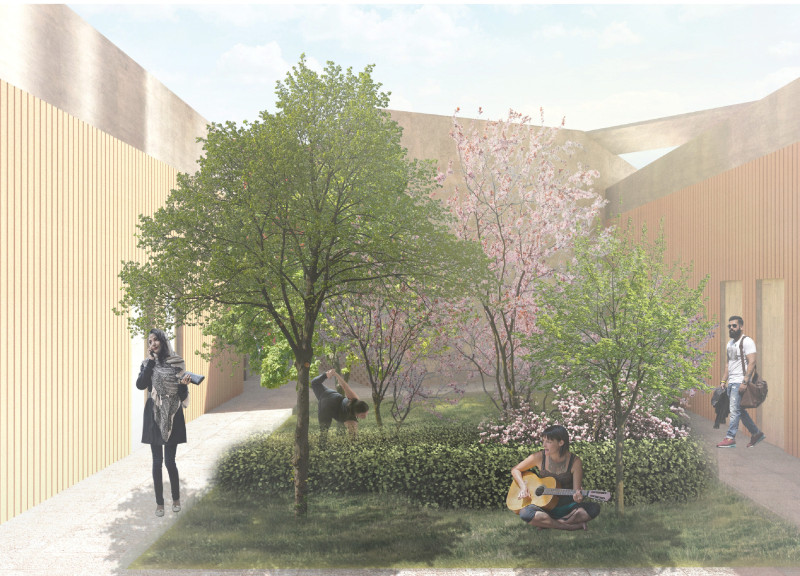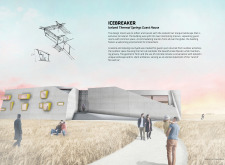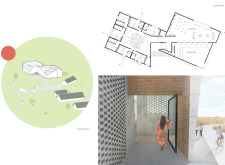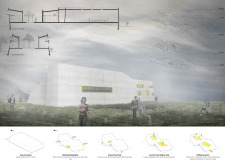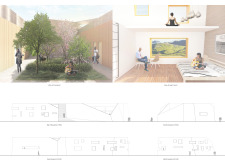5 key facts about this project
The Iceland Thermal Springs Guest House is set in a landscape defined by geothermal features and natural beauty. It provides a space for visitors to relax and connect with their surroundings. The design aims to blend with the environment while providing areas for both individual reflection and social interaction.
Design Concept
The building consists of two interlocking sections that keep the guest rooms separate from communal spaces. This organization allows guests privacy while still encouraging social engagement. The layout facilitates movement between indoor and outdoor areas, mirroring the natural forms of the surrounding terrain.
Courtyard and Outdoor Spaces
A key feature of the guest house is its courtyard, which serves as a calming outdoor space for guests after a day of exploration. This area includes a hot tub and offers views of Lake Mývatn, helping guests to unwind while surrounded by nature. The design emphasizes the importance of outdoor views, enhancing the overall visitor experience.
Materiality and Form
Concrete is the primary material used in the guest house, chosen for its strength and ability to withstand the elements. This material connects the building to its environment, reflecting the theme of the “land of fire and ice.” The overall form carefully considers local weather conditions and is designed to create interesting patterns of light and shadow throughout the day.
Environmental Responsiveness
Some design elements focus on responding to the environment, such as the shifted building blocks that maximize sunlight from the east while reducing exposure to the west. This approach helps with natural heating and light. Skylights are also integrated into the design, bringing daylight deep into the guest spaces and maintaining a connection with the outdoors.
The tilted roof design allows for views of the surrounding landscape, elevating the experience for those inside. Each aspect of the project is thoughtfully considered, resulting in a design that respects and enhances the unique qualities of its Icelandic setting.


